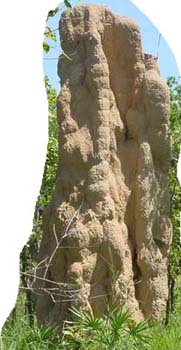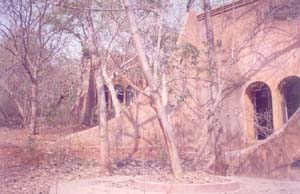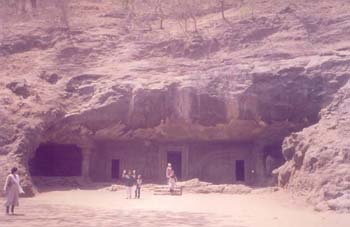- Dr. Susan Sharma
 Termite mounds are marvels of engineering. Deep inside, the insects farm a fungus, their only food. It must be kept at exactly 30 degree centigrade, while the temperatures outside can range from 2 degrees at night to 40 degrees
during the day.
Termite mounds are marvels of engineering. Deep inside, the insects farm a fungus, their only food. It must be kept at exactly 30 degree centigrade, while the temperatures outside can range from 2 degrees at night to 40 degrees
during the day.
They do it by venting breezes in at the base of the mound, down into chambers cooled by wet mud carried up from water tables far below, and up through a flue to the peak. Toiling with the tireless, compulsive work ethic of all ants,
they constantly dig new vents and plug old ones to regulate the temperature.
Engineers are now beginning to look at the feats of these creatures more closely. Harare in Africa has built an office building taking cooling cues from termites.
In India , our ancestors observed and got inspired by nature in almost everything they did. They built cave homes which had excellent cooling using circulation of air. There is a more recent Hawa Mahal in Jaipur which use natural
air circulation for cooling.
In Uttara Kannada, Huthu (anthill) indicates water at short depths — say within 20 to 25 feet. The reasoning here is that the white ants bring wet soil from not-so-deep in the ground.
Methods to improve the natural durability and strength of the soil – commonly referred to as Soil Stabilization – have been practiced in many countries. Stabilizers such as natural oils, plant juices, animal dung and crushed anthills;
have been used for many centuries in India and African countries. In Zimbabwe , white ants are regarded as beneficial insects and protected because they provide the farmers with cheap natural fertilizer. When applying the soil, farmers ensure that the anthills
are not destroyed in order to rely on them again after some years of recovery. The productivity of the land is reported as having increased.
India 's commercial capital Mumbai, has these structures which are in tune with nature.
|

|

|
|
Conservation Education Centre(BNHS), Goregaon, Mumbai
|
Elephanta Caves , Mumbai
|